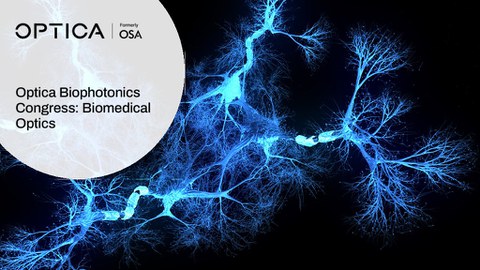07.04.2024
Optica Biophotonics Congress: Biomedical Optics – Invited Talk
Frau PD Dr. Julia Walther hielt ihren invited talk "Optical coherence tomography in the oral cavity" in der Session "New OCT Devices" des topical meetings "Optical coherence tomography", in dem sie die neusten Entwicklungen der faseroptischen Sonden für die Bildgebung der prämalignen humanen Mundschleimhaut sowie Kariesläsionen im Approximalraum in vivo vorstellte.
https://tu-dresden.de/med/mf/mph/die-arbeitsgruppe/impressionen
Der zweijährliche Kongress zur Biomedizinischen Optik mit dem Schwerpunkt auf technologischen Lösungen für medizinische Herausforderungen und Anwendungen ist in fünf topical meetings gegliedert.
Clinical and Translational Biophotonics (Translational)
Covers the development and application of optical techniques for clinical applications.
Microscopy, Histopathology and Analytics (Microscopy)
Presents the latest research in tissue microscopy, automated analysis and machine-learning approaches, as well as laboratory-based analytics and fluidics, reagents and labels, along with challenges in translating such developments into the clinic.
Optical Coherence Tomography (OCT)
Covers novel OCT light sources, imaging probes, and systems; computational modeling and imaging processing algorithms; and multimodal technologies, as well as basic and translational applications.
Optical Tomography and Spectroscopy (OT&S)
Focuses on new developments in non-invasive optical tomography and spectroscopy, including the fields of diffuse optical tomography (DOT) and spectroscopy (DOS), diffuse correlation tomography (DCT) and spectroscopy (DCS), photoacoustic tomography (PAT), laser speckle imaging, Raman spectroscopy, fluorescence imaging, wavefront engineering to overcome scattering, as well as on novel biophotonics developments in pre-clinical and clinical applications.
Optics and the Brain (Brain)
Showcases innovative research, tools and techniques that seek to increase fundamental knowledge about the brain and nervous system.

